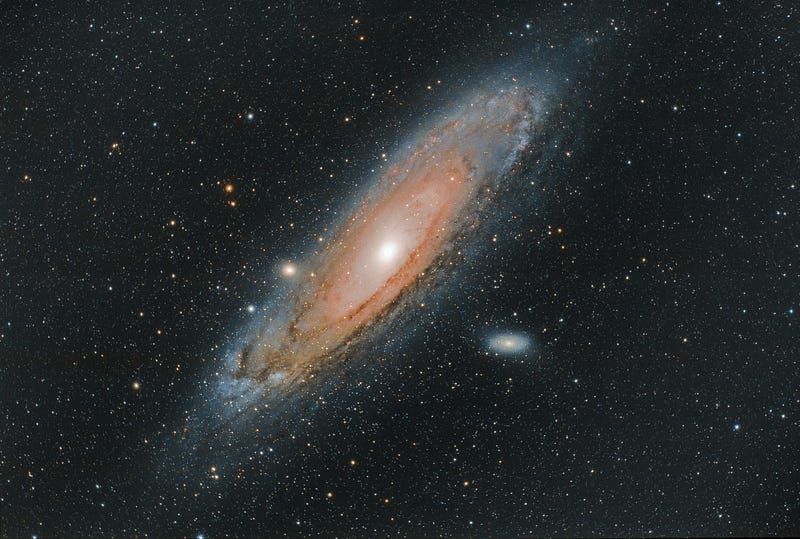The Future Collision Between the Milky Way and Andromeda
Our Galaxy the Milky Way is on a collision course with another large galaxy.

Andromeda is a spiral galaxy, similar to our galaxy the Milky Way but much larger. It is approximately 2.5 million light-years (15 quadrillion miles / 24 quadrillion kilometres) from our planet.
2.5 million light-years is a vast distance when you consider that light travels 9.46 trillion kilometres (5.88 trillion miles) in one year. A trillion is 1 followed by 12 zeros: 1,000,000,000,000.
Andromeda is the nearest large spiral galaxy to the Milky Way and is estimated to contain a trillion stars. It has a diameter of over 200,000 light-years, and on a clear night, it can be seen as a faint, fuzzy patch with the naked eye.
At present, the Andromeda Galaxy and the Milky Way are moving towards each other, closing the distance between them at a rate of roughly 110 kilometres per second (68 miles per second), or about 396,000 kilometres per hour (246,000 miles per hour).
There is no need to panic; the two galaxies will not merge for approximately four billion years.
By then, the Earth will be devoid of all life. Our planet, which has hosted countless organisms, will be far too hot for any form of life to survive.
It will take an extremely long time, but the two galaxies will eventually settle and become one large elliptical galaxy.
When that merger occurs, you might expect frequent star collisions; however, such events will be very rare, due to the vast distances between individual stars.
British spelling.
In Knowledge Sponge, I’ll be diving into the wonders of the universe and life through a series of engaging and thought-provoking short stories.

